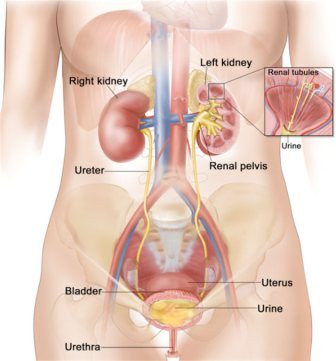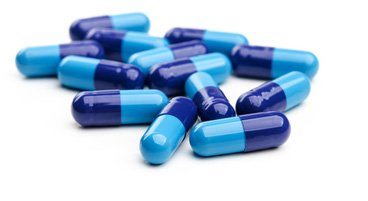“D-Mannose is a naturally occurring sugar found in cranberries that has been proven to help prevent and reduce the severity of urinary tract infections. It is the active ingredient in cranberries, minus the sugar that usually comes in large amounts with the juice. D-mannose works by inhibiting bacteria from lining the walls of the urinary tract. If the bacteria can’t latch onto the urethra or bladder, it is less likely to cause an infection.”
URINARY TRACT INFECTION TREATMENT (UTI)
A urinary tract infection is an infection involving the urethra, bladder, ureters or kidneys. These four areas comprise of the urinary tract, where urine passes through our body.
Our kidneys drain urine through two ureters (a narrow tube, approximately 30cm long) into our bladder. Our bladder collects and stores urine until it passes through the urethra, the tube that connects the bladder with the outside of the body. Any part of this system can become infected, resulting in a UTI.
Urinary tract infections are the second most common infection in the human body with approximately 50% of all women experiencing a UTI in their lifetime with 25% experiencing recurrent UTIs.
Urinary Tract Infection Causes
HOW A UTI BEGINS
Normal urine is sterile, but when bacteria get into the urine an infection can occur. A typical urinary tract infection will usually start at the opening of the urethra where the urine leaves the body. This opening is the most likely place bacteria may enter the urinary tract. Once inside the urinary tract, the bacteria can make it’s way up into the bladder and a UTI starts.
THE BACTERIA
The bacteria E. Coli which is typically found in the colon and around the anus causes approximately 90% of UTIs. The remaining 10% of urinary tract infections are typically caused by Klebsiella pneumoniae.
Luckily, E. Coli caused UTIs can be treated quickly and effectively with a natural extract called D-mannose.
THE CAUSE
The most common way the bacteria make their way from around the anus to the urethra is from sexual intercourse or incorrect wiping.
Menopause and birth control diaphragms have also shown to increase the chance of a urinary tract infection.
Females have shorter urethra’s, making them more prone to UTIs.
DEVELOPMENT OF THE INFECTION
The bacteria can travel up the urethra into the bladder where they can grow and cause a painful infection. If one does not take action early or has a compromised immune system, the infection can spread further up the urinary tract into the kidneys.
Urinating, or emptying the bladder regularly can flush the bacteria out of the urethra before it makes it’s way into the bladder and causes any damage.
WORST CASE SCENARIO
The worst case scenario happens when the bacteria make it from the bladder to the kidneys which can cause a kidney infection, at which point you will want to seek immediate medical treatment. In this situation, antibiotics would most likely be required and potentially hospitalisation.
HIGH-RISK GROUP
Some people with medical conditions such as a spinal cord injury may not be able to empty their bladder properly and become more susceptible to urinary tract infections.
People with suppressed immune systems and those with blockages in the urinary tract such as kidney stones or an enlarged prostate.
Pregnant women, sexually active women and those experiencing reduced estrogen levels after menopause are at higher risk.
UTI SYMPTOMS
pharmacies and doctors.
Anyone with an upper urinary tract infection involving the kidneys should seek medical advice as
soon as possible.
Urinary Tract Infection symptoms can be broken up into the lower and upper urinary tract.
Bladder Infection
A bladder infection, also called Cystitis, can occur if bacteria enters through the urethra and infects the bladder. The body usually rids itself of bacteria by flushing it out through urine, however sometimes the bacteria can make its way up and stick to the walls of the bladder and multiply rapidly.
Women are more susceptible to getting UTIs as their urethra are smaller than men’s. Men also produce a protective hormone from their prostate gland to kill off bacteria that may enter.
Kidney Infection
Typically, a UTI will only affect the lower urinary system (the bladder and the urethra) however if left unaddressed a UTI can travel up to the upper urinary organs and result in what is known as Pyelonephritis. Pyelonephritis is potentially very serious as the infection can spread systemically and get into the bloodstream.
The kidneys play a vital role in the body, and it’s crucial that pyelonephritis is addressed immediately by a medical professional as it can have long-term effects. People with diabetes or those with a weakened immune system are more susceptible to this infection. Pyelonephritis can almost always be cured with antibiotics.

UTI Treatment
Once a diagnosis has been made by either a test strip or a urine sample sent to a lab, treatment will vary.
Upper UTI – Antibiotics
For serious UTIs in the upper urinary tract, the bacteria may need to be analysed to accurately prescribe the correct antibiotics. Depending on how sick the patient has become, they may require IV fluids and oral antibiotics for a week. If not addressed properly, a urinary tract infection can eventually lead to permanent kidney damage if it extends into the kidneys.

Lower UTI – D-mannose
With a UTI limited to the lower urinary tract, using D-mannose frequently throughout the day is a great way take control of the infection and minimise the symptoms.
Drinking cranberry juice is often recommended for the treatment of UTIs, as studies have shown that cranberry juice can help promote a healthy flora, thus enhancing the immune system and your urinary tract. The downfall of incorporating large amounts of cranberry juice into your diet though is that it is naturally high in fructose, which can undoubtedly affect your blood sugar levels, cause stress on your liver, as well as have other health repercussions.
The great news though is that the active ingredient found in cranberry juice; D-mannose, has now been isolated and can be used for the treatment of UTIs. Unlike fructose (naturally high in cranberry juice), D-mannose will not convert to glycogen or get stored in your liver. It also won’t interfere with blood sugar regulation, as only small amounts are metabolized by the body, making it an excellent alternative for those with diabetes. In its pure form D-mannose can be 10-50 times stronger than cranberry juice, with no adverse side-effects on your health.

THINGS TO AVOID
• Consume no sugar as it can fuel an infection by encouraging the growth of harmful bacteria.
• Drink plenty of water and avoid coffee, alcohol, and other acid substances that can irritate the bladder.
Antibiotics for UTI
PREVENTION
Recurrent UTIs should be further looked into in order to find the underlying urinary tract problem that may be the cause. If not treated correctly, a severe urinary tract infection can cause scarring of the urinary tract. Short-term kidney damage can occur with the infection spreading into the bloodstream.
- Wiping front to back
- Empty the bladder regularly and completely
- Empty the bladder after sexual intercourse
- Drink plenty of water
- Shower, instead of bath
- Keep the genital area clean
- Reduce alcohol and caffeine
- D-mannose supplement
Urinary Tract Infection – FAQs
The most common early symptoms of a Urinary Tract Infection are:
- Burning sensation when urinating
- Having to urinate frequently
- Feeling an urgency to urinate
- Cloudy or bad smelling urine
For the first couple of days D-mannose is a fantastic way of controlling the UTI and relieving pain. If the UTI goes longer and you develop a bladder or kidney infection antibiotics are required.
If you’re prone to regular UTIs, a small dose of daily D-mannose can help prevent getting a UTI.